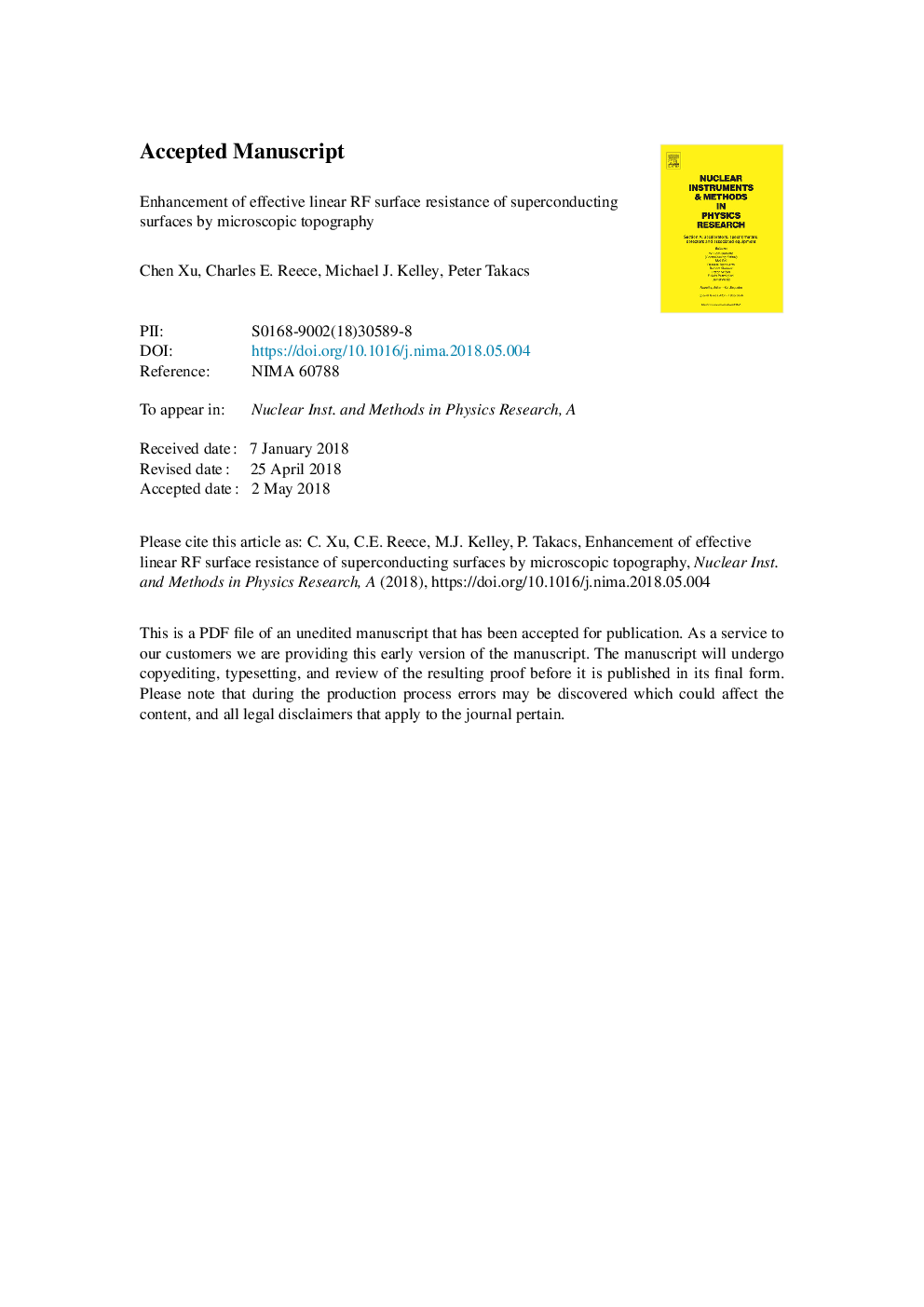| Article ID | Journal | Published Year | Pages | File Type |
|---|---|---|---|---|
| 8165911 | Nuclear Instruments and Methods in Physics Research Section A: Accelerators, Spectrometers, Detectors and Associated Equipment | 2018 | 16 Pages |
Abstract
Minimization of Radio-Frequency (RF) dissipation on superconducting surfaces is of interest for many applications. A prominent one is the use of Superconducting RF (SRF) cavities for charged particle acceleration. In addition to our previous investigation which characterized the occurrence of high-field non-linear losses by microscopic surface topography, the topic of increased linear losses as a function of surface topographic character merits consideration. Surfaces with isotropic homogeneous surface topography may be well characterized by power spectral density (PSD) derived from systematic height measurements. PSD characterizations of representative niobium cavity surface treatments have been developed: Electro-Polishing (EP), Nano-Mechanical Polishing (NMP) and Centrifugal Barrel Polishing (CBP) A perturbation model based on PSD statistical analysis is used to calculate additional RF loss on these surfaces when superconducting. The model assesses the penetration depth effects for a superconductor. We thus estimate the RF power dissipation ratio between these rough surfaces and an ideal smooth surface.
Related Topics
Physical Sciences and Engineering
Physics and Astronomy
Instrumentation
Authors
Chen Xu, Charles E. Reece, Michael J. Kelley, Peter Takacs,
